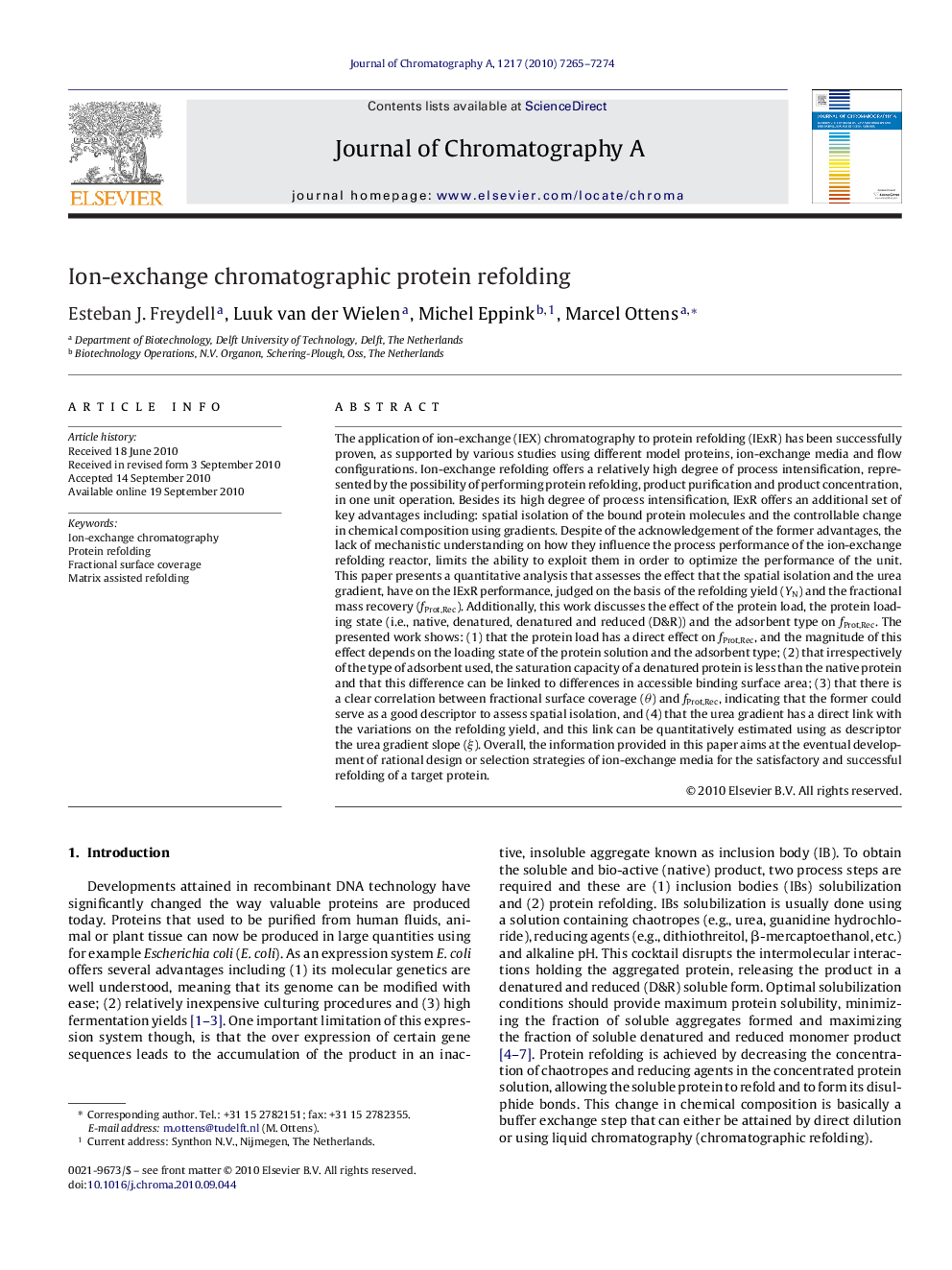| Article ID | Journal | Published Year | Pages | File Type |
|---|---|---|---|---|
| 1203784 | Journal of Chromatography A | 2010 | 10 Pages |
The application of ion-exchange (IEX) chromatography to protein refolding (IExR) has been successfully proven, as supported by various studies using different model proteins, ion-exchange media and flow configurations. Ion-exchange refolding offers a relatively high degree of process intensification, represented by the possibility of performing protein refolding, product purification and product concentration, in one unit operation. Besides its high degree of process intensification, IExR offers an additional set of key advantages including: spatial isolation of the bound protein molecules and the controllable change in chemical composition using gradients. Despite of the acknowledgement of the former advantages, the lack of mechanistic understanding on how they influence the process performance of the ion-exchange refolding reactor, limits the ability to exploit them in order to optimize the performance of the unit. This paper presents a quantitative analysis that assesses the effect that the spatial isolation and the urea gradient, have on the IExR performance, judged on the basis of the refolding yield (YN) and the fractional mass recovery (fProt,Rec). Additionally, this work discusses the effect of the protein load, the protein loading state (i.e., native, denatured, denatured and reduced (D&R)) and the adsorbent type on fProt,Rec. The presented work shows: (1) that the protein load has a direct effect on fProt,Rec, and the magnitude of this effect depends on the loading state of the protein solution and the adsorbent type; (2) that irrespectively of the type of adsorbent used, the saturation capacity of a denatured protein is less than the native protein and that this difference can be linked to differences in accessible binding surface area; (3) that there is a clear correlation between fractional surface coverage (θ) and fProt,Rec, indicating that the former could serve as a good descriptor to assess spatial isolation, and (4) that the urea gradient has a direct link with the variations on the refolding yield, and this link can be quantitatively estimated using as descriptor the urea gradient slope (ξ). Overall, the information provided in this paper aims at the eventual development of rational design or selection strategies of ion-exchange media for the satisfactory and successful refolding of a target protein.
